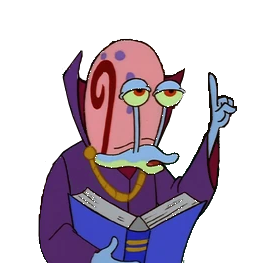Welcome to the third week of reading Trans Liberation: Beyond Pink or Blue by Leslie Feinberg!
If you’re just getting started, here’s a link to the thread for Chapter 1: https://hexbear.net/post/5178006?scrollToComments=false and Chapter 2: https://hexbear.net/post/5254179?scrollToComments=false
We’re only doing one chapter per week and the discussion threads will be left open, so latecomers are still very much welcome to join if interested.
As mentioned before… This isn’t just a book for trans people! If you’re cis, please feel free to join and don’t feel intimidated if you’re not trans and/or new to these topics.
Here is a list of resources taken from the previous reading group session:
pdf download
epub download - Huge shout out to comrade @EugeneDebs for putting this together. I realized I didn’t credit them in either post but here it is. I appreciate your efforts. ❤️
chapter 1 audiobook - Huge shout out to comrade @futomes for recording these. No words can truly express my appreciation for this. Thank you so much. ❤️
chapter 2 audiobook
chapter 3 audiobook
chapter 4 audiobook
chapter 5 audiobook
chapter 6 audiobook
chapter 7 audiobook
chapter 8 audiobook
Also here’s another PDF download link and the whole book on ProleWiki.
In this thread we’ll be discussing Chapter 3: Living Our True Spirit.
CWs: Minor mentions of transphobia.
This chapter covers a speech by Feinberg at the True Spirit Conference, a regional conference described as being for “people who are themselves, or who are supportive of others who were assigned female gender at birth, but who feel that is not an adequate or accurate description of who they are.”
The “Portrait” section here is written by the conference chairperson, Gary Bowen, who describes himself as “a gay transman of Apache and Scotch-Irish descent, left-handed, differently-abled, the parent of two young children -one of whom is also differently abled - of an old Cracker frontier family from Texas, a person who values his Native heritage very deeply, and who is doing his best to live in accordance with the Spirit, and who keeps learning more about his heritage all the time.”
I’ll ping whoever has been participating so far, but please let me know if you’d like to be added (or removed).
Feel free to let me know if you have any feedback also. Thanks!


This is all very interesting, but this in particular caught my eye:
That is something that I had never considered. I’m not sure that I understand how sex is also socially constructed, unless maybe you mean that because we can change our bodies through hormone treatments and surgery? Which makes sense I suppose. I guess it could also be that we’re taking a roughly bimodal spectrum of physical characteristics and jamming them into binary categories. The more I think of it, the more it makes sense to me, although I’m not certain whether it makes sense for the right reasons or whether it just sounds plausible enough (like the misunderstanding that started this chain).
Edit: Also the more I think about it, my second guess sounds more correct to me. The first one feels a bit too medicalist-adjacent to me, although I did not intend that.
Sorry if my questions are annoying, you just seem to know a lot about things that I’m trying to understand better. Thank you for taking the time to write such detailed responses. I really appreciate it :)
No, I love questions! I am an adult educator and this is one of my specialties! There are a few great books that cover this kind of stuff, like Alice Domurat Dreger’s Hermaphrodites and the Medical Invention of Sex (Dreger is kind of terrible about trans stuff these days, but she was really on the cutting edge of writing on the social aspects of intersex at the time of this book, and it is definitely worth reading). In feminist theorizing, following Simone de Beauvoir’s pronouncement that people are made–not born–woman (in the Second Sex), it’s been a common thread of exploration that the quest to differentiate men and women has been a sociopolitical project and not a natural truth.
Extending that into queer studies, and especially examining intersex and trans bodies/lives, it can be seen that there is no natural law that determines a mutually exclusive binary of man-woman. The quest to create a medico-biological categorization of sex has one that has been scientifically fraught. What determines male vs female? Early hormonal models were shown pretty quickly to be useless–you can easily replace hormones, and even among “cis” men and women there is no clear line of what demarcates a “male” level of hormone from a “female” level of hormone, especially considering how even within an individual there will be different hormonal experiences throughout a lifetime.
Then came gonadal models, which are problematized by the existence of a wide range of intersex realities. A cis man who lives his entire life as a man and in autopsy is found to have ovaries sort of throws that whole mutual exclusivity of gonadal sex right out the window. There are so many different gonadal configurations (including ovotestes) that are often not even indicative of secondary sex characteristics (which has also been discarded as a useful model of sexing) that it all sort of falls apart. It’s not even statistically insignificant–as many as 1 in 100 births has some form of intersex “condition.”
Then we have the advent of chromosomal models, which are pretty useless as an explication for the existence of two mutually exclusive sexes–what with the fact that we asserted two sexes as a a “natural law” before we ever had any knowledge of chromosomes existing. Applying them as an explanation after the fact is as political a move as it gets. And of course, we have very little understanding of the vast complex of genes and how they express sex characteristics, there’s certainly more involved than “sex chromosomes,” which even themselves are not actually found in only binary configurations, and are certainly not mutually exclusive to the categories of man and woman.
All of this to say that medical categorizations of male and female have been applied to pre-existing social frameworks, in ever-shifting models as people attempt to pin down some essential character after the fact to finally prove these categories to be natural law, when every time the science just does not agree. Outside of more medical discourse, there is plenty of explorations of the way that sex is leveraged as some “natural fact” to divide women from men for exploitation. Trans and intersex people are threats to those models, so they face the most visible attacks on that front, but the elimination of trans and intersex realities is for the most part barely about trans and intersex people themselves, but about the systemic necessity of oppressing literally half of the world’s population, a feat that requires extensive violence and the social reproduction of an untenable hierarchy that only persists through masquerading as a natural law.
Studies–like Kessler and McKenna’s–have shown that the primary factor in sexing a human is the presence of a penis, over and above any other secondary sex characteristics. It was especially common (until very recently, and in many places it is still common) to determine the sex of an infant entirely based upon the presence of a normative penis. This resulted in children whose penises were considered non-normative, with less potential to be “pleasing” or “functional” to be sexed as girls and operated on, often without knowledge or consent of the parents if the penis could not be “fixed,” or operated on unnecessarily to “fix” the penis and thus retain male sexing.
A few more books if interested: Judith Butler’s Bodies That Matter: On The Discursive Limits of “Sex”, Angela Pattatuchi Aragón’s Challenging Lesbian Norms: Intersex, Transgender, Intersectional, and Queer Perspectives, Viviane K. Namaste’s Invisible Lives: The Erasure of Transsexual and Transgendered People and Rita Santos’ Beyond Gender Binaries: The History of Trans, Intersex, and Third-Gender Individuals
I’ve got a bunch more recommendations as well, especially about trans-feminism, including a reading list: https://hexbear.net/post/4435465
I see, that makes a lot of sense. Thank you again! And thank you for the reading list as well!